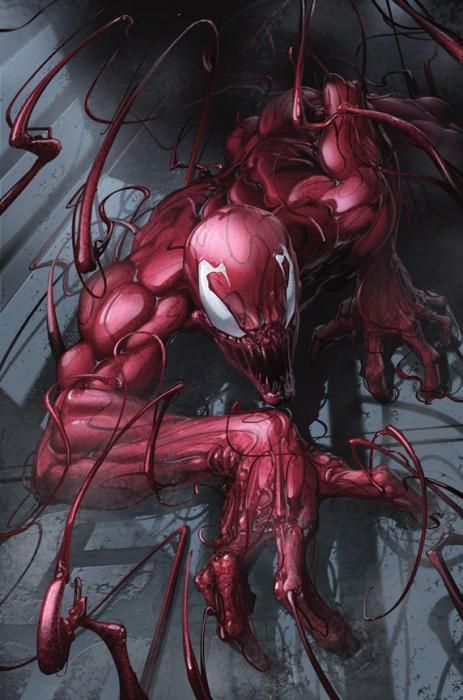Cletus Kasady may be comatose following the events of "Minimum Carnage," but that hasn't stopped writer Kevin Shinick and artist Stephen Segovia from bringing the favorite symbiote of the '90s back for "Superior Carnage" #1.
Picking up almost directly where the last Carnage story left off, "Superior Carnage" sees the symbiote freed once again -- although this time, with no controlling intelligence to guide it: just raw instinct. It's a strange direction for a character that has recently been through a rehabilitation of sorts -- away from aimless, murderous psychopath towards someone who was, at the very least, pursuing his own twisted philosophy.
The result is a book where the ostensible lead can't form a coherent thought, meaning the viewpoint is shifted to characters around him and their reaction to his presence. The story begins through the eyes of Ted Connelly, and although it appears to be heading in one direction, it veers quickly in another. The second half focuses on the reintroduction of an old Marvel villain in full Jack Kirby mode. It's such a tonal clash that it has to be deliberate, but it doesn't necessarily work.
Carnage's mindlessness is the bigger hurdle this miniseries has to clear, but given that it hasn't stuck the landing by the end of the first issue, it's hard to know what readers are supposed to come back for. The idea of Carnage being controlled by someone else is vaguely floated and might be an attempt to draw a deliberate parallel with "Superior Spider-Man" -- but if that is indeed the series hook, it should've been properly established in the first issue. As it is, there's no pitch to the reader about how Carnage is being reinvented, just a cliffhanger with no reason to care.
If Shinick doesn't seem entirely sure what to do with the character, at least artist Stephen Segovia isn't having any trouble. His version of Carnage plays up the alien aspect and looks spindly and chaotic. It's like a less glossy interpretation of Clayton Crain's version, but a strong design that distinguishes the character from, for example, Venom. The storytelling is less unequivocally successful, though, and the panel where a fairly prominent character dies is actively unclear (possibly because of the coloring), meaning readers might actively miss a story beat.
Anyone buying a Carnage series is going to get what they want out of this book -- Carnage on a rampage -- but even then, it's hard to recommend a story where the title character is practically reduced to the margins. Given that it's got two critically-acclaimed Carnage miniseries as forerunners, the use of the "Superior" adjective can't help but seem like misjudged hubris.

